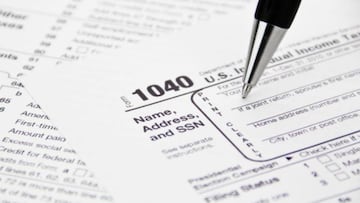Tax deadline 2023: Is April 18 too late to file for an IRS tax extension?
The deadline for the 2023 tax season is upon us. For those that need more time the window is closing to apply for a six-month extension to file “on-time”.

If you’re one of the over 101 million people who hasn’t filed your 2022 tax return to the IRS and don’t think that you’ll be able to get your declaration in by Tuesday 18 April, then you better get moving to apply for a six-month extension. If you haven’t already, you have until then to request more time to get your papers together to avoid a late filing fee.
However, you’ll have to pay any taxes that you owe, to the best of your knowledge, or you may be hit with late-payment penalties as well as interest that will accrue until you’ve paid in full. If you cannot pay in full, you may want to look into a payment plan with the IRS.
Note, that there are certain taxpayers that live or have a business in areas that were affected by natural disasters to whom the IRS has given an automatic extension. Those range from 15 May to 16 October, but should you need even more time than has been granted, you’ll have to request a further extension via writing.
Here’s a look at how you can get an extension fairly painlessly.
How to apply for a deadline extension from the IRS for 2022 tax return filings
Individual tax filers, regardless of income, can use IRS Free File to electronically request an automatic tax-filing extension.
Filing this form normally gives you until 15 October to file a return. But know that this year, the date is 16 October as the 15th falls on a Sunday. However, it’s worth noting that a filing extension isn’t a payment extension, so you need to estimate the tax you owe and pay this in full or in part by the original due date.
If you want to ask for more time to file your taxes, you have a few different options:
1: Mail IRS Form 4868 with tax payment
You can fill in the paper version of Form 4868 and post it to the IRS, enclosing your estimated income tax payment in the form of a check or money order. Make sure the form is postmarked by the 18 April due date this year as sending anything on 19 April is too late.
2: Make electronic payment
Alternatively, you can avoid filling in Form 4868 by paying all or part of your owed tax electronically, and indicating that it is an extension payment. The IRS will automatically be notified of your request for a delayed due date, without the need for the form. There are three e-payment methods: Direct Pay, the Electronic Federal Tax Payment System, or credit or debit card.
3: Submit Form 4868 using Free File and send payment by mail
You also have the option of filing Form 4868 using the IRS’ online Free File platform, and sending your payment by mail. “If you e-file Form 4868 and mail a check or money order to the IRS for payment, use a completed paper Form 4868 as a voucher,” the IRS says. “Please note with your payment that your extension request was originally filed electronically.”
If you can’t pay the taxes you owe, you should file Form 4868 anyway, and look at your options for establishing a payment plan with the IRS.
IRS video explainer on applying for extension:





